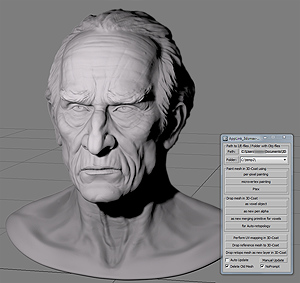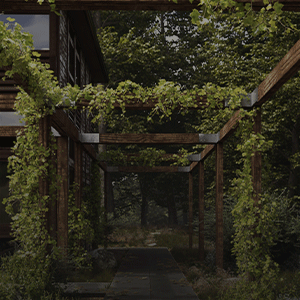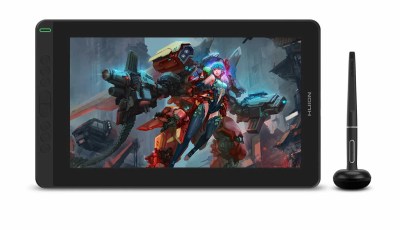3D-Coat 3.5 review
Applink
The Applink feature is relatively new to 3D-Coat, and at the time of this writing it’s still under development. When it’s polished and ready, it should provide streamlined communication between 3D-Coat and various 3D software, including Max, Maya, Softimage, Mudbox, ZBrush and quite a few other ones, including compositing software such as Nuke and Fusion.
Since this feature is still being worked on, the following paragraphs should be read in this context. The 3ds Max Applink version was tested with 3ds Max 2012. After installation you can open the Applink panel, which gives you the option to export the model to be painted either with per-pixel painting, microvertex painting or Ptex. You can also export meshes to 3D-Coat to be converted to Voxels, to be used as a primitive for voxel creation, or to work with them in the Retopology room. You can also export meshes directly to the UV-mapping room.
Functionality at this time seems to be random at best, it wasn’t possible to export meshes to 3D-Coat and import them back to 3ds Max. That was after spending an hour on the script, which is slightly annoying. Exported objects didn’t show up in 3D-Coat until both Max and 3D-Coat were restarted.
Based on postings at the 3D-Coat forum, the implementation of the Applink feature seems to be in varying states of progress depending on software platform, many of the Applink scripts / plugins appear to be still in an early phase of development. Installation of Applinks range from manual copying of scripts to semi-automatic installation.
Applink will be a useful addition to the 3D-Coat toolset, if bugs are ironed out and installation is automated, but currently at least the 3ds Max implementation seemed to cause more hassle than it would be of help.
Documentation
3D-Coat has a PDF manual and an online Wiki, which both cover the basics of 3D-Coat. Pilgway also hosts an active discussion forum, which is a hub for 3D-Coat users and some knowledgeable individuals are lurking there. A good number of video tutorials covering the software’s features are also available on the company’s site.
Conclusion
3D-Coat is already a capable tool for many tasks like sketching out ideas and retopologizing sculpted models, but it would benefit a lot from a bit more streamlined user interface, which would mainly require relocation of a few critical tools and functions. Posing tools could also be improved with some fine tuning: the features are already there, but the tool itself is unconventional and cumbersome to use.
The texture painting system would be improved too by the use of more standardized conventions when it comes to property channels, and additional texture channels like colored specular and self illumination would be welcome. Texture layer management could be more streamlined, too.
3D-Coat is currently sold at an attractive $349 price for commercial use. Depending on your needs, it might be a relatively good purchase even if you are just looking for a retopology or unwrapping software, compared to what other single purpose tools cost.
Voxel tools seem to have received most attention lately. So if you are looking for freeform sculpting tools, there’s already a robust set of tools. Autopo is also another feature that is not found in any competing product, not even close to this price range.
If you’re looking for a pure 3D painting application for heavy work, it might be wise to check out some other software. That is not to say that 3D-Coat is no good, but there are better and more specialized tools out there, like The Foundry’s Mari or Autodesk’s Mudbox. However, if price tag is an issue and you need to do retopologization and UV mapping, 3D-Coat is definitely worth the price, considering ZBrush offers only vertex color painting for a similar price and Mari costs almost double and requires specialized and high-cost hardware.
Unlike other software that may take a long while to get an update, 3D-Coat is updated almost every other week. Some updates fix bugs that have been reported by users, while other updates are more like beta releases (for those who are willing to test new features despite possible glitches). New features appear frequently and the development team seems to respond well to user feedback. It’s really good to see reproducible bugs vanish thanks to this.
To conclude, 3D-Coat is an affordable Swiss Army Knife for sculpting 3D models. It’s still a bit rough around the edges but it packs quite a lot promise and what is most important, it can already get many tasks done with ease.

Olli Sorjonen has created and art directed all kinds of CG things, spanning from game art to animation during the last decade. When Olli is not tackling the minefield of game and CG jobs in the northern darkness of Finland, he has been creating illustrations, 3D models and digital sculptures among other things. You can find more about his work at CGMill.com.

Sami Sorjonen has a background as a 3D generalist in games and animation, he has created environmental art, characters and has also done lots of technical problem solving on many projects. He likes to dabble with all things 3D, 2D and art in general; anatomy, drawing, digital sculpting, rigging and motion capture, and also mess around with things like Maxscript, Actionscript and C#. You can find more about his work at CGMill.com.









ZBrush: $700 – &800
3D Coat: $300 – $400
Mudbox: $100 – $200 2 year sub license
Modo: $800 – $1000 jack of all trades minus Mari
Final words I would say their all good, I have the first and last options. Though I have given up on ZBrush, terrible interface but awesome experience if your willing to dump your personal time into it. Modo if you want a cheap modelling tool or Blender if you can’t afford it.
I would say 3D Coat is the middle ground, less paint brush and more accurate tooling. Some artists don’t like that luckily I’m not one of them. Mudbox is alright but you can’t do everything in one app unlike the other options.